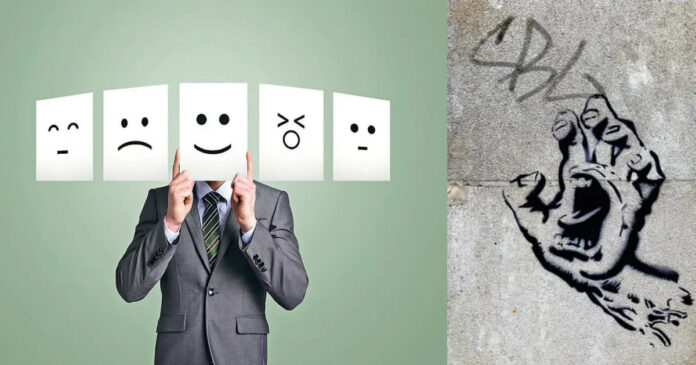On October 5, the European Commission presented the first-ever EU Strategy on combating antisemitism and fostering Jewish life. The foremost reason for such a strategy is a perceivable rise of Nazism in some countries of Europe and Eastern Europe.
President of the European Commission, Ursula von der Leyen says the Strategy sets out a series of measures articulated around three pillars: to prevent all forms of antisemitism; to protect and foster Jewish life; and to promote research, education, and the Holocaust. The Strategy proposes measures to step up cooperation with online companies to curb antisemitism online, better protect public spaces and places of worship, set up a European research hub on contemporary antisemitism, and create a network of sites where the Holocaust happened. These measures will be reinforced by the EU’s international efforts to lead the global fight against antisemitism.
Vice-President for Promoting Our European Way of Life, Margaritis Schinas indicates the strategy that is the first of its kind would work to ensure a better future for Jewish life in Europe and beyond.
We understand “Hate” against any group, religion, state, and even individual is unacceptable. Hate earns further hate and this vicious circle never ends. The Independent reports that Neo-Nazis are on social media and they’re making money through Facebook, Instagram, YouTube, and Twitter by selling hate and to promote their brands.
Western societies should remember the fact that generating hatred against any group (Semitic) or any religion (Islam) would not stop there because hatred is a social poison that would harm the entire body of society
Meanwhile, the Office of the United Nations High Commissioner for Human Rights and Human Rights Council on October 5, started the general Debate on Racism and Racial Discrimination to find out and fix contemporary forms of racism, racial discrimination, xenophobia, and related forms of intolerance as a follow-up activity for implementation of the Durban Declaration and Programme of Action.
The Durban Declaration suggested actions against any kind of discrimination (gender, ethnic, racial, religious, etc) to contest human rights abuses, racially discriminatory structures, and technologies (use of cyber world).
While living in Europe, one can feel that gender, ethnic, racial, and religious discrimination is morally unacceptable. Nevertheless, it is present everywhere like a lethal gas that cannot be seen but kills human relations with its existence.
In the same Europe where discrimination is a moral crime, there are people like former Prime Minister of United Kingdom Tony Blair who believes that Islamism, both the ideology and the violence, is a first-order security threat. I cannot consider his statement just as Islamophobia rather more than that. This is not a phobic statement rather a strategic, intelligent, and calculated move to tag Islam again with violence. Unfortunately, neither the Organization of Islamic Cooperation responded to Blair’s statement nor did the European Commission express any concern over such discriminatory, hateful and dangerous statements that can trigger further hate crimes against Muslims. We remember the majority of hate crimes took place in Europe were race and religion hate crimes, accounting for around three-quarters of offences (76 percent; 78,991 offences). These increased by 11 percent between 2017-18 and 2018-19.
The leading western psychotherapist Dr Erin Leonard, who writes regularly to western newspapers, including The Huffington Post, believes that Hate primarily has two origins. The first is an unconscious defense mechanism called as projective identification. The second cause of hate stems from an individual’s experience of feeling dehumanized. Ironically, projective identification is what compels an individual to devalue or dehumanize another person, so a cycle exists. Breaking the chain of hate requires an understanding of both projective identification and the experience of being dehumanized.
We understand projective identification is an unconscious defense mechanism that guards a person with an extremely fragile ego, and the person hides behind a grand façade of smoke, mirrors, and bravado in order to protect a weak ego. This person who hates others is unable to tolerate parts of himself or herself, so he or she projects the hated parts onto someone else, which allows him or her to feel entitled to blame, control, dominate, punish, and humiliate the other person. In other words, the person gains his or her security by making someone else feel inferior.
In a comprehensive review of classic as well as more contemporary conceptualizations, several researchers describe hatred as the most destructive affective phenomenon in the history of human nature. These destructive implications of hatred on human life have been widely documented in several recent contributions. The literature shows that hate has been defined in a variety of ways, a problem characteristic for emotions in general. Hate has been considered an emotional attitude, a syndrome, a form of generalized anger, a generalized evaluation, a normative judgment, and a motive to devalue others.
The topic of Hate is no longer a subject only for psychologists; rather in-depth empirical researches on hatred have been conducted in the last four decades by other disciplines, such as sociology, political science, communication, and social justice.
Western societies should remember the fact that generating hatred against any group (Semitic) or any religion (Islam) would not stop there because hatred is a social poison that would harm the entire body of society.























